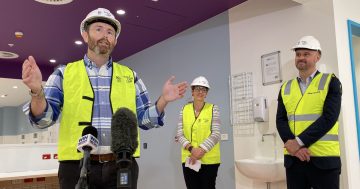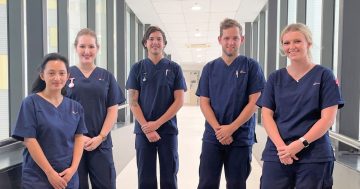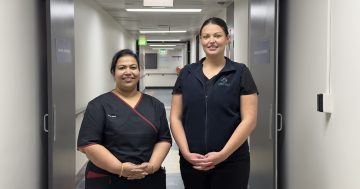The Chief Minister and Minister for Health Katy Gallagher today announced a suite of initiatives to further improve patient experience at Canberra Hospital and make it easier for nurses to continue to offer excellent care.
The new measures include: introducing ‘team nursing’, where nurses share care across a team rather than individual nurses concentrating on a set number of allocated patients; recruiting Assistants in Nursing to free up nurses’ time to use their specialist skills for patient care; changing visiting hours to increase the amount of family support available to patients and bringing in new ways to collect patient feedback.
“We know the overwhelming majority of patients report high satisfaction levels with the care they receive, but it is important that we keep evolving to improve care, make patients’ stays more comfortable and ensure our highly-trained nurses use their skills where they are most valuable,” the Chief Minister said.
“The government has been working since early 2014 on a range of strategies to better support nurses with ways to ensure top quality care in a busy and complex environment can be provided.”
Some of the changes underway or already implemented include:
- Team nursing which involves nurses working as a team to provide care for all patients on the ward,
which replaces the model where individual nurses are allocated a set group of patients to care for. - Assistants in Nursing added to the teams to supplement delivery of patient care.
- Visiting hours changes – Shortly, where it is deemed clinically appropriate revised visiting hours of 0600
to 2100 will be rolled out to align with the opening hours of the hospital. This aims to establish consistent visiting hours across general inpatient wards of the hospital as family and visitors can be an important component of the healing experience for patients whilst at the same time reduce the anxiety and social isolation associated with illness. - Implementation of Patient Trackers to enable patients to record and ‘score’ their experience at the actual point of care.
- The introduction of a tissue viability team, which assesses patients’ skin to identify those at risk of pressure injuries and design plans to minimise the risk of uncomfortable sores or other pressure injuries (there has been an 80% reduction in hospital acquired pressure injuries since 2010).
- Better/easier to access food packaging.
- More beds across the Territory.
- Changes to bed configuration at Canberra Hospital to better match bed numbers with demand.
- Ongoing development of online consumer portal.
“Assistants in Nursing will help reduce some of the load on nurses by carrying out some basic tasks that don’t require the same high level of training that nurses have. The number of registered and enrolled nurses will remain unchanged, but nurses will have more time for patients to benefit from their professional skills.
“Similarly, team nursing means moving away from the current model where individual nurses care for allocated patients and instead a team of nurses will share care for patients. This means patients won’t have to wait for their dedicated nurse to be available to look after them.”
There has been a continued focus on improving basic care requirement for patients while in hospital. In February 2014, ACT Health conducted an audit of basic care requirements across the hospital which showed that whilst on the whole the care was good, there was potential for improvements. The audits were repeated in September 2014 which indicated care was improving in nearly all areas.
“We also know that sometimes, patients who are feeling particularly troubled or vulnerable often exhibit challenging behaviour. Part of the work that has been underway is to work closely with these patients to further involve families in patient care, where appropriate. We have seen that for some of our more challenging patients, they are more comfortable with their family members assisting them than our staff,” the Chief Minister said.
“This work is work that has been underway for some time and will be ongoing. This is about further improving the patient experience in the hospital. Our feedback figures show that the overwhelming majority of our feedback is positive and complimentary and it is clear that feedback to government is increasingly positive.”
(Katy Gallagher Media Release)




















